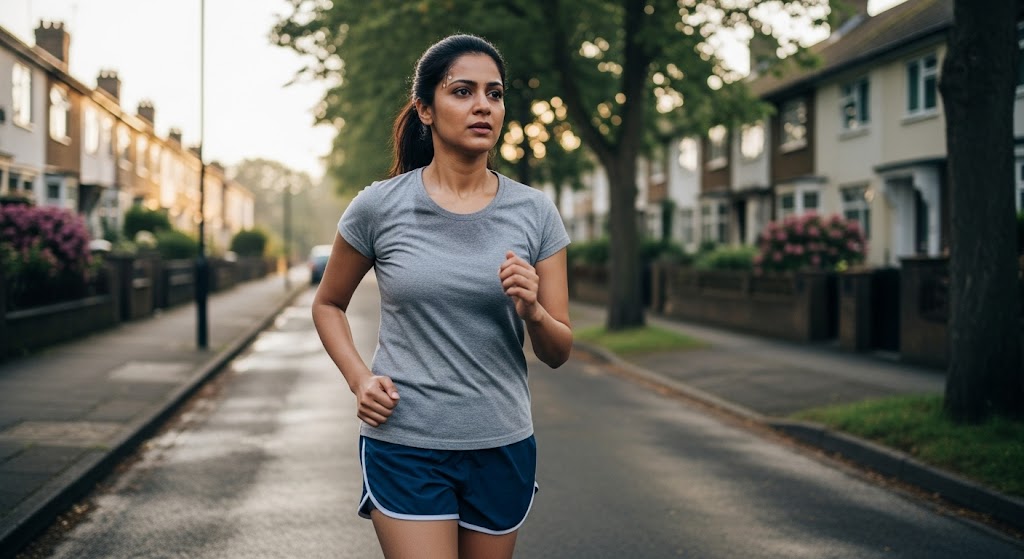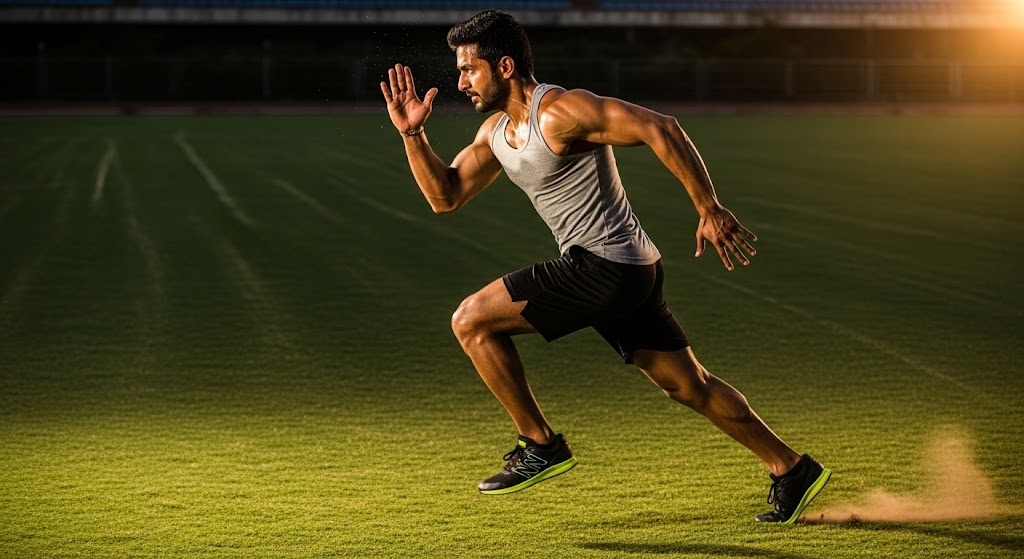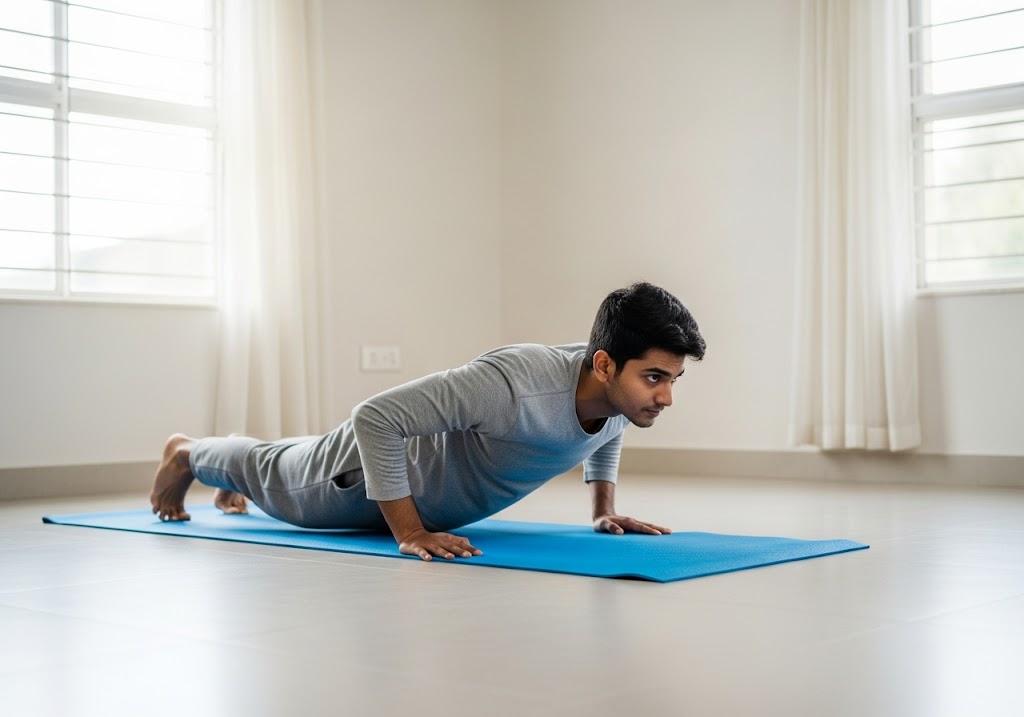How many calories does 15 minutes of running burn? 15 minutes of running burns 150-300 calories depending on body weight, speed, and intensity, with heavier people and faster paces burning more. Calorie burn factors for 15 minutes of running include: Body weight (50-100kg range), running speed (6-15 km/h), terrain difficulty, weather conditions, running efficiency, fitness level, age, gender, muscle mass, and metabolic rate.
Want to know exactly how many calories 15 minutes of running burns for effective weight management? The answer depends on multiple factors including your body weight, running speed, and fitness level. Generally, 15 minutes of running burns between 150-300 calories for most people, making it an incredibly efficient exercise for calorie burning and weight loss goals. Understanding 15 minutes of running burns how many calories helps create realistic expectations for your fitness journey while planning effective workout routines. This complete guide covers everything from basic calorie calculations to advanced strategies for maximizing your calorie burn during short running sessions.
Table of Contents
15 Minutes of Running Burns How Many Calories? Complete Breakdown
Understanding exactly how many calories 15 minutes of running burns requires examining the relationship between body weight, running speed, and metabolic efficiency. This comprehensive breakdown provides accurate estimates based on scientific research and established metabolic equations.
| Body Weight (kg) | Light Jog (8 km/h) | Moderate Run (10 km/h) | Fast Run (12 km/h) | High Intensity (15 km/h) |
|---|---|---|---|---|
| 50kg | 120 calories | 150 calories | 180 calories | 225 calories |
| 60kg | 145 calories | 180 calories | 215 calories | 270 calories |
| 70kg | 170 calories | 210 calories | 250 calories | 315 calories |
| 80kg | 195 calories | 240 calories | 290 calories | 360 calories |
| 90kg | 220 calories | 270 calories | 325 calories | 405 calories |
| 100kg | 245 calories | 300 calories | 360 calories | 450 calories |
For comprehensive fitness programs that incorporate running, full body calisthenics workout provides complementary exercises that support running performance and overall fitness development.

What Determines Running Calorie Burn?
Running calorie burn depends on several physiological and environmental factors that influence your metabolic rate during exercise. Understanding these variables helps predict how many calories 15 minutes of running burns for your specific situation and optimize your training for maximum results.
Body weight represents the most significant factor affecting calorie burn during running activities. Heavier individuals burn more calories because they must move greater mass against gravity, while lighter people burn fewer calories for the same distance and duration. This relationship remains consistent across all running intensities and durations.
Running speed and intensity dramatically impact calorie expenditure, with faster paces burning exponentially more calories than leisurely jogging. The energy demands increase significantly as speed rises, making 15 minutes of running burns how many calories calculations highly dependent on your chosen pace and effort level throughout the session.
For understanding different training approaches that complement running, calisthenics vs gym provides insight into various exercise methods for comprehensive fitness development.
Benefits of Running for Calorie Burn
Running provides exceptional calorie burning benefits that make it one of the most efficient exercises for weight management and cardiovascular health. Beyond the immediate calorie expenditure during activity, running creates metabolic adaptations that support long-term weight control and improved fitness levels.
The high calorie burn rate of running makes it incredibly time-efficient for busy schedules. When you understand how many calories 15 minutes of running burns, you can plan effective short workouts that fit into packed daily routines while still achieving meaningful fitness results and weight management goals.
- High Calorie Expenditure: Burns 10-20 calories per minute depending on intensity and body weight
- Afterburn Effect: Continues burning calories for hours after exercise through EPOC
- Cardiovascular Health: Strengthens heart and improves circulation for better overall health
- Accessibility: Requires minimal equipment and can be done virtually anywhere
- Mental Health Benefits: Reduces stress and improves mood through endorphin release
- Bone Density: Weight-bearing exercise strengthens bones and prevents osteoporosis
- Metabolic Boost: Regular running increases resting metabolic rate for continued calorie burn
- Time Efficiency: Achieves significant calorie burn in short time periods

How Many Minutes of Running a Day to Lose Weight?
Determining how many minutes of running a day to lose weight depends on your current weight, running intensity, and weight loss goals. Generally, 20-60 minutes daily provides significant calorie burn for sustainable weight loss when combined with proper nutrition and consistent training habits.
Weight loss requires creating a calorie deficit of approximately 3,500 calories per 0.5kg of fat loss. Understanding that 15 minutes of running burns how many calories helps calculate the running duration needed to achieve your specific weight loss targets through exercise alone or combined with dietary changes.
Conservative Weight Loss (0.25kg per week):
- 30-45 minutes moderate running daily
- Burn 300-500 calories per session
- Create 1,750 calorie weekly deficit
- Sustainable long-term approach
Moderate Weight Loss (0.5kg per week):
- 45-60 minutes moderate running daily
- Burn 500-700 calories per session
- Create 3,500 calorie weekly deficit
- Balanced approach with nutrition support
Aggressive Weight Loss (0.75kg per week):
- 60+ minutes or high-intensity intervals
- Burn 700+ calories per session
- Create 5,250 calorie weekly deficit
- Requires careful monitoring and recovery
The key to sustainable weight loss lies in consistency rather than extreme daily durations. Knowing how many minutes of running a day to lose weight helps establish realistic goals while maintaining long-term adherence to your fitness program.
For supporting your weight loss goals with proper nutrition, calisthenics diet chart provides comprehensive meal planning strategies that complement running training.
10 Minutes of Running Burns How Many Calories?
Many people want to know how many calories 10 minutes of running burns for quick fitness sessions that fit into busy schedules. This shorter duration still provides meaningful calorie burn and health benefits, especially when performed consistently over time.
The calorie burn for 10 minutes of running typically ranges from 80-300 calories depending on body weight and running intensity. While less than longer sessions, these quick workouts accumulate significant benefits when performed regularly and can serve as stepping stones to longer training sessions.
| Body Weight (kg) | Light Jog (8 km/h) | Moderate Run (10 km/h) | Fast Run (12 km/h) | Sprint Intervals |
|---|---|---|---|---|
| 50kg | 80 calories | 100 calories | 120 calories | 150 calories |
| 60kg | 95 calories | 120 calories | 145 calories | 180 calories |
| 70kg | 110 calories | 140 calories | 165 calories | 210 calories |
| 80kg | 130 calories | 160 calories | 195 calories | 240 calories |
| 90kg | 145 calories | 180 calories | 220 calories | 270 calories |
| 100kg | 165 calories | 200 calories | 240 calories | 300 calories |
Understanding how many calories burned in 10 minutes of running helps appreciate that even short exercise sessions contribute meaningfully to daily calorie expenditure. These brief workouts work particularly well for interval training or as part of longer circuit-style training sessions.

How Many Calories Does 45 Minutes of Running Burn?
For those with more time available, understanding how many calories does 45 minutes of running burn helps plan longer training sessions for maximum weight loss and fitness benefits. This extended duration allows for substantial calorie expenditure while building cardiovascular endurance.
Forty-five minutes of running burns approximately 450-1,350 calories depending on body weight and intensity level. This significant calorie expenditure makes longer running sessions extremely effective for weight loss goals and cardiovascular fitness development over time.
45-Minute Running Calorie Burn:
- Light jogging: 350-750 calories
- Moderate running: 450-900 calories
- Fast running: 550-1,080 calories
- High-intensity intervals: 650-1,350 calories
The substantial calorie burn from 45-minute sessions demonstrates why longer running workouts provide excellent results for serious weight loss goals. However, building up to these durations requires gradual progression to prevent injury and maintain consistency.
Longer running sessions also provide superior cardiovascular adaptations and mental health benefits compared to shorter workouts. The extended time allows for deeper metabolic changes and greater stress relief through sustained endorphin release during the activity.
For recovery strategies that support longer training sessions, warm up exercises for beginners provides essential preparation techniques for safe and effective running workouts.
Factors That Affect Running Calorie Burn
Multiple factors influence how many calories you burn during running sessions, making individual variations significant when calculating 15 minutes of running burns how many calories for your specific situation. Understanding these variables helps optimize your training for maximum calorie expenditure.
Body composition plays a crucial role in calorie burn during running activities. Individuals with higher muscle mass burn more calories at rest and during exercise due to the metabolic demands of maintaining muscle tissue. Age and gender also affect metabolic rate and calorie burn efficiency.
Physiological Factors:
- Body weight and composition
- Age and gender differences
- Fitness level and running efficiency
- Metabolic rate variations
Training Variables:
- Running speed and intensity
- Duration and consistency
- Terrain and elevation changes
- Weather conditions and temperature
Technical Factors:
- Running form and efficiency
- Footwear and clothing choices
- Hydration and nutrition status
- Recovery and fatigue levels
These factors interact complexly to determine individual calorie burn rates during running. While general estimates provide useful guidelines, personal experimentation helps determine your specific calorie expenditure patterns for accurate planning and goal setting.
Running Intensity Levels and Calorie Burn
Different running intensities dramatically affect calorie burn rates, making it essential to understand how pace impacts 15 minutes of running burns how many calories for your training goals. Higher intensities burn more calories per minute but may not be sustainable for longer durations.
Low-intensity steady-state running burns calories primarily from fat stores, making it excellent for fat loss and building aerobic endurance. Moderate intensities provide balanced calorie burn from multiple fuel sources while remaining sustainable for most fitness levels and training goals.
Zone 1 (Easy Pace – 65-75% Max HR):
- Sustainable for long durations
- Primary fat burning intensity
- 8-12 calories per minute
- Excellent for beginners
Zone 2 (Moderate Pace – 75-85% Max HR):
- Balanced fuel utilization
- Good for general fitness
- 12-16 calories per minute
- Most common training intensity
Zone 3 (Vigorous Pace – 85-95% Max HR):
- High calorie burn rate
- Primarily carbohydrate fueled
- 16-20+ calories per minute
- Requires good fitness base
High-intensity interval training combines multiple intensity zones for maximum calorie burn and metabolic adaptation. These workouts burn calories during exercise and create significant afterburn effects for continued calorie expenditure hours after training completion.
For understanding different exercise approaches, basic calisthenics workout provides complementary training methods that support running performance and overall fitness development.

Tips for Maximizing Calorie Burn While Running
Maximizing calorie burn during running requires strategic approaches that increase energy expenditure while maintaining sustainable training practices. These proven techniques help you get the most from your running sessions regardless of whether you’re doing short 15-minute sessions or longer workouts.
Incorporating interval training significantly boosts calorie burn by alternating between high and low intensities during single sessions. This approach burns more calories during exercise and creates greater afterburn effects compared to steady-state running at moderate intensities.
- Interval Training: Alternate between high and moderate intensities for maximum calorie burn
- Hill Running: Uphill grades increase energy demands and calorie expenditure significantly
- Speed Variations: Include tempo runs and fartlek training for metabolic challenges
- Cross Training: Combine running with strength training for enhanced muscle building
- Progressive Overload: Gradually increase duration or intensity for continued adaptation
- Proper Fueling: Maintain adequate nutrition to support high-intensity training sessions
- Consistent Schedule: Regular training maintains metabolic adaptations and calorie burn
- Recovery Focus: Adequate rest prevents burnout and maintains training quality
- Form Improvement: Efficient running technique reduces energy waste and injury risk
- Environmental Challenges: Use hills, trails, and weather variations for added difficulty
These strategies help optimize your calorie burn whether you’re interested in 10 minutes of running burns how many calories for quick sessions or longer duration training for maximum weight loss results.
Learn the progression and technique for the how to do a one‑arm push‑up and unlock elite strength with bodyweight training.
Running for Different Fitness Goals
Running serves multiple fitness goals beyond simple calorie burning, with different approaches optimizing results for weight loss, cardiovascular health, endurance building, or athletic performance. Understanding these applications helps design effective running programs for your specific objectives.
Weight loss running emphasizes creating calorie deficits through consistent moderate-intensity sessions combined with proper nutrition. Knowing 15 minutes of running burns how many calories helps plan daily exercise volume needed to achieve desired weight loss rates safely and sustainably.
Weight Loss Focus:
- Moderate intensity for fat burning
- 30-60 minutes daily consistency
- Combined with calorie deficit nutrition
- Progress tracking through measurements
Cardiovascular Health:
- Mix of intensities throughout week
- 150+ minutes moderate weekly
- Include some high-intensity sessions
- Focus on heart rate training zones
Endurance Building:
- Gradual duration increases
- 80% easy, 20% moderate-hard intensity
- Weekly long runs for adaptation
- Cross-training for injury prevention
Athletic Performance:
- Sport-specific speed and power training
- Periodized training with recovery cycles
- Technique and efficiency focus
- Performance testing and progression
Each goal requires different approaches to running training, making it important to align your program with desired outcomes rather than simply maximizing calorie burn every session.
For comprehensive core strength that supports running performance, how many planks should i do a day provides essential stability training guidance.
Common Running Mistakes That Reduce Calorie Burn
Many runners unknowingly reduce their calorie burn through common mistakes that decrease training efficiency and effectiveness. Understanding these errors helps optimize your running sessions whether you’re doing quick 10-minute sessions or longer duration workouts.
The most significant mistake involves running at the same pace and duration consistently without progression or variation. This approach leads to fitness plateaus where your body becomes efficient at the specific demands, reducing calorie burn over time through metabolic adaptation.
- Lack of Progression: Failing to increase intensity or duration prevents continued adaptation and calorie burn improvement
- Poor Running Form: Inefficient technique wastes energy and increases injury risk while reducing performance
- Inadequate Recovery: Overtraining reduces workout quality and prevents metabolic adaptations that boost calorie burn
- Ignoring Nutrition: Poor fueling limits training intensity and recovery, reducing overall calorie expenditure
- Same Route Daily: Avoiding challenges like hills or speed variations limits calorie burn potential
- Starting Too Fast: Beginning workouts above sustainable pace leads to early fatigue and reduced session quality
- Neglecting Warm-up: Skipping preparation increases injury risk and reduces training effectiveness
- Inconsistent Training: Sporadic running prevents fitness adaptations that improve calorie burn efficiency
- Wrong Footwear: Inappropriate shoes increase injury risk and reduce running efficiency
- Dehydration: Inadequate fluid intake reduces performance and calorie burn during training sessions
Avoiding these mistakes helps maximize the calorie burn from your running sessions while supporting long-term training consistency and injury prevention.
Running vs Other Cardio for Calorie Burn
Comparing running to other cardiovascular exercises helps understand why 15 minutes of running burns how many calories makes it such an efficient choice for weight management and fitness goals. Running consistently ranks among the highest calorie-burning exercises available.
Running’s high calorie burn rate stems from its total-body involvement, high intensity potential, and efficient movement patterns. Unlike many gym-based cardio machines, running engages stabilizing muscles and allows unlimited intensity increases for maximum calorie expenditure.
Calorie Burn Comparison (15 Minutes, 70kg Person)
| Exercise Type | Light Intensity | Moderate Intensity | High Intensity | Accessibility |
|---|---|---|---|---|
| Running | 170 calories | 210 calories | 250 calories | Excellent |
| Cycling | 120 calories | 150 calories | 180 calories | Good |
| Swimming | 150 calories | 180 calories | 220 calories | Limited |
| Rowing | 140 calories | 170 calories | 200 calories | Limited |
| Jump Rope | 160 calories | 200 calories | 240 calories | Excellent |
| Walking | 60 calories | 80 calories | 100 calories | Excellent |
This comparison shows running’s superior calorie burn potential across all intensity levels. The combination of high energy expenditure and accessibility makes running an optimal choice for most people’s fitness and weight management goals.
For understanding calorie burn from other activities, cycling for 30 minutes burns how many calories provides detailed information about cycling as a complementary exercise to running.
Creating an Effective Running Schedule
Developing an effective running schedule requires balancing calorie burn goals with recovery needs and progression principles. Whether your focus is understanding how many minutes of running a day to lose weight or building overall fitness, systematic planning ensures optimal results.
Successful running schedules incorporate variety in duration, intensity, and terrain to prevent adaptation plateaus while maintaining motivation. This approach maximizes calorie burn while reducing injury risk through balanced training stress and adequate recovery periods.
Beginner Schedule (Week 1-4):
- Monday: 15 minutes easy pace
- Tuesday: Rest or cross-training
- Wednesday: 20 minutes moderate pace
- Thursday: Rest or light activity
- Friday: 15 minutes with intervals
- Weekend: 25-30 minutes easy pace
Intermediate Schedule (Week 5-12):
- Monday: 25 minutes tempo run
- Tuesday: Cross-training or rest
- Wednesday: 30 minutes moderate pace
- Thursday: 20 minutes intervals
- Friday: Rest or easy run
- Weekend: 45-60 minutes long run
Advanced Schedule (Week 13+):
- Monday: 35 minutes tempo run
- Tuesday: Strength training
- Wednesday: 40 minutes moderate pace
- Thursday: 30 minutes intervals
- Friday: Recovery run or rest
- Weekend: 60+ minutes long run
This progressive approach ensures steady improvement while managing training stress for optimal adaptation and calorie burn enhancement over time.
Nutrition Support for Running and Calorie Burn
Proper nutrition supports optimal calorie burn during running while providing energy for training and recovery. Understanding nutritional needs helps maximize the benefits of knowing 15 minutes of running burns how many calories for your fitness and weight management goals.
Pre-run nutrition should provide readily available energy without causing digestive discomfort during exercise. Post-run nutrition focuses on recovery and replenishing energy stores to support continued training and metabolic adaptation.
Pre-Run Nutrition Guidelines:
- Light meal 2-3 hours before running
- Focus on easily digestible carbohydrates
- Moderate protein for sustained energy
- Adequate hydration 2-4 hours prior
During Run Fueling:
- Water for sessions under 60 minutes
- Sports drinks for longer or intense sessions
- Monitor thirst and sweat rates
- Practice fueling strategies during training
Post-Run Recovery:
- Protein and carbs within 30-60 minutes
- 3:1 or 4:1 carb to protein ratio
- Rehydrate based on sweat losses
- Include anti-inflammatory foods
Proper nutrition timing enhances calorie burn during running while supporting recovery and adaptation between training sessions.
For comprehensive nutrition planning that supports running training, intermittent fasting plan provides structured approaches to eating that complement exercise goals.
Tracking Running Calories and Progress
Accurate tracking of running calories and progress helps optimize training effectiveness and maintain motivation throughout your fitness journey. Various methods exist for monitoring calorie burn, with different approaches providing unique benefits for goal achievement and program adjustment.
Heart rate monitors provide the most accurate calorie burn estimates during running by measuring actual physiological responses to exercise stress. GPS watches combine distance, pace, and heart rate data for comprehensive training analysis and calorie calculations.
Technology-Based Tracking:
- Heart rate monitors for accurate calorie estimates
- GPS watches for pace and distance data
- Smartphone apps for convenience tracking
- Fitness trackers for daily activity monitoring
Manual Tracking Methods:
- Training logs for workout details
- Body weight and measurement tracking
- Photo progress documentation
- Performance benchmark testing
Key Metrics to Monitor:
- Weekly running volume and intensity
- Average calorie burn per session
- Body composition changes over time
- Running performance improvements
Consistent tracking helps identify patterns in calorie burn and training response, allowing for program adjustments that optimize results based on individual response to different training approaches.
Understanding how other exercises contribute to daily calorie burn helps create comprehensive fitness programs. how many crunches per day provides information about core exercise calorie contributions to complement running training.
Safety Considerations for Running
Safe running practices ensure consistent training while minimizing injury risk that could interrupt your progress toward calorie burn and fitness goals. Whether you’re doing short 15-minute sessions or longer duration runs, proper safety protocols protect your health and training consistency.
Progressive training increases reduce injury risk while allowing steady improvements in fitness and calorie burn capacity. Sudden increases in running volume or intensity often lead to overuse injuries that prevent consistent training and goal achievement.
Training Progression:
- Increase weekly volume by 10% maximum
- Build base fitness before intense training
- Include rest days for recovery and adaptation
- Listen to body signals and adjust accordingly
Environmental Safety:
- Choose safe routes with adequate lighting
- Wear reflective gear during low-light conditions
- Dress appropriately for weather conditions
- Stay hydrated and recognize heat illness signs
Injury Prevention:
- Proper running shoes for your gait pattern
- Dynamic warm-up before intense sessions
- Post-run stretching and mobility work
- Address minor issues before they become major problems
Health Monitoring:
- Regular health check-ups for clearance
- Monitor heart rate during intense efforts
- Recognize signs of overtraining syndrome
- Seek professional guidance for persistent issues
Safe running practices ensure long-term success with your calorie burn and fitness goals while maintaining overall health and well-being throughout your training journey.
For understanding recovery needs during intensive training, should you exercise with sore muscles provides guidance on training through fatigue safely.

Running Equipment and Gear
Proper running equipment enhances safety, comfort, and performance while supporting your goals related to 15 minutes of running burns how many calories and overall fitness development. Quality gear improves training experience and helps maintain consistency through various weather and terrain conditions.
Running shoes represent the most important equipment investment, providing proper support, cushioning, and biomechanical alignment during training. Professional gait analysis helps select shoes that match your individual running pattern and reduce injury risk.
Footwear Requirements:
- Properly fitted running shoes for your gait
- Replace shoes every 500-800 kilometers
- Consider having multiple pairs for rotation
- Different shoes for various terrain types
Clothing Considerations:
- Moisture-wicking fabrics for comfort
- Layering systems for weather adaptation
- Reflective elements for visibility
- Avoid cotton materials during longer runs
Monitoring Technology:
- Heart rate monitors for intensity tracking
- GPS watches for pace and distance data
- Smartphone apps for convenience
- Hydration systems for longer sessions
Safety Accessories:
- Reflective gear for low-light running
- ID tags or emergency information
- First aid supplies for longer trail runs
- Communication devices for remote areas
Quality equipment supports consistent training by improving comfort and reducing barriers to regular running sessions, ultimately supporting your calorie burn and fitness goals.
Weather Considerations for Running
Weather conditions significantly impact calorie burn during running, with temperature, humidity, and wind affecting energy expenditure and training quality. Understanding these factors helps optimize 15 minutes of running burns how many calories calculations while maintaining safe and effective training year-round.
Hot weather increases calorie burn through thermoregulation demands but requires careful hydration and heat illness prevention strategies. Cold weather may reduce initial calorie burn but often allows for longer, more intense training sessions once properly warmed up.
Hot Weather Running:
- Increased calorie burn through cooling mechanisms
- Higher dehydration and heat illness risk
- Reduced sustainable exercise intensity
- Requires modified training times and hydration
Cold Weather Running:
- Normal calorie burn once warmed up
- Extended comfortable training duration
- Require appropriate layering and gear
- Risk of hypothermia during longer sessions
Wind and Precipitation:
- Headwinds increase energy demands significantly
- Tailwinds may reduce calorie burn slightly
- Rain requires safety and comfort considerations
- Snow and ice create traction and safety challenges
Adapting training approaches to weather conditions ensures consistent progress while maintaining safety and training quality throughout seasonal changes.
For recovery strategies that complement running training, cold shower vs hot shower provides information about temperature therapy benefits for athletes.
Long-Term Running Success
Sustainable running success requires balancing immediate calorie burn goals with long-term health and fitness development. Understanding how many minutes of running a day to lose weight helps establish realistic expectations while building habits that support lifelong fitness and health.
Progressive goal setting ensures continued motivation and improvement beyond initial weight loss or fitness objectives. As your fitness improves, calorie burn efficiency may decrease, requiring program adjustments to maintain desired results and continued adaptation.
Goal Evolution:
- Begin with basic consistency and calorie burn
- Progress to performance and distance goals
- Include strength and flexibility development
- Consider competitive events for motivation
Program Periodization:
- Vary training intensity throughout year
- Include dedicated recovery and rebuilding phases
- Address different fitness components systematically
- Prevent burnout through planned variety
Lifestyle Integration:
- Make running part of daily routine
- Find running communities for social support
- Include family and friends when possible
- Maintain flexibility for life circumstances
Continuous Learning:
- Study running form and efficiency
- Experiment with different training methods
- Learn from setbacks and challenges
- Celebrate progress and achievements
Long-term success with running requires viewing it as a lifestyle component rather than temporary weight loss solution, ensuring sustained benefits and continued enjoyment of the activity.
For additional exercises that support running performance, bodyweight exercises for beginners provides complementary strength training options.
Conclusion
Understanding 15 minutes of running burns how many calories empowers you to make informed decisions about exercise duration, intensity, and frequency for your fitness goals. Whether you’re interested in quick 10-minute sessions or longer 45-minute workouts, running provides exceptional calorie burn efficiency and health benefits. The key to success lies in consistency, progressive overload, and aligning your training with realistic goals while maintaining proper safety protocols throughout your fitness journey.
Want to master the calisthenics handstand and take your skills to the next level? Whether you’re a beginner or pushing advanced skills, ISC – Indian School of Calisthenics offers expert guidance to help you master bodyweight training. Visit us at SRPF Ground, NH8, Goregaon (E), Mumbai – 400065. For class schedules, personalized coaching, or more details, call +91 77159 53218. Train smart, move better, and unlock your back strength with ISC.
15 Minutes of Running Burns How Many Calories? – FAQs
How many minutes of running a day to lose weight?
30-60 minutes of daily running typically supports sustainable weight loss when combined with proper nutrition and consistent training habits.
How many calories burned in 10 minutes of running?
10 minutes of running burns 80-200 calories based on body weight and intensity, making it effective for short fitness sessions.
What factors affect running calorie burn?
Body weight, running speed, fitness level, terrain, weather conditions, age, gender, and muscle mass all influence calorie expenditure during running.
How many calories does 45 minutes of running burn?
45 minutes of running burns 450-1,350 calories depending on body weight and intensity, making it excellent for significant calorie expenditure.
Is running the best exercise for calorie burn?
Running ranks among the highest calorie-burning exercises due to total-body involvement and scalable intensity levels for maximum energy expenditure.
How fast should I run to burn the most calories?
Higher intensities burn more calories per minute, but moderate paces may be more sustainable for longer durations and total calorie burn.
Does running uphill burn more calories?
Yes, uphill running significantly increases calorie burn due to greater energy demands from working against gravity and terrain resistance.
How accurate are calorie burn estimates for running?
Estimates provide general guidelines, but individual variations in metabolism, efficiency, and body composition affect actual calorie burn significantly.
Can I lose weight by running 15 minutes daily?
15 minutes daily can contribute to weight loss when combined with proper nutrition, though longer durations may be needed for significant results.
What’s better for calorie burn: steady running or intervals?
High-intensity intervals burn more calories during and after exercise through EPOC effects, but steady running allows longer durations.


